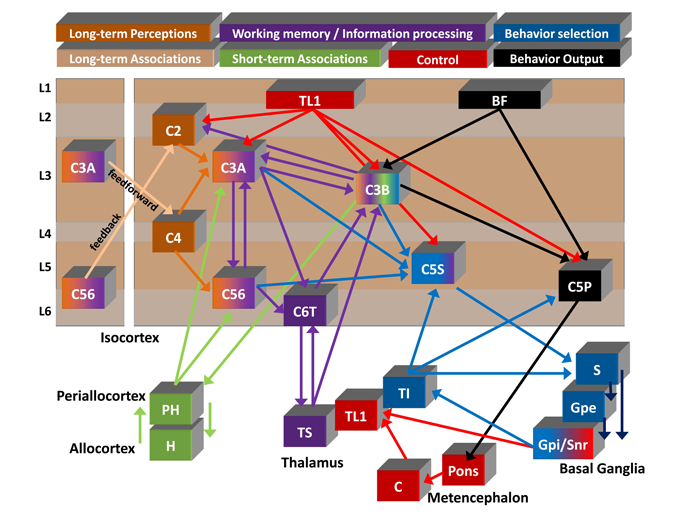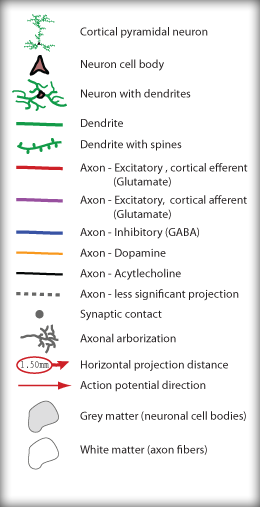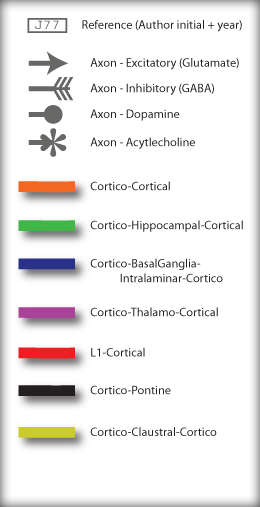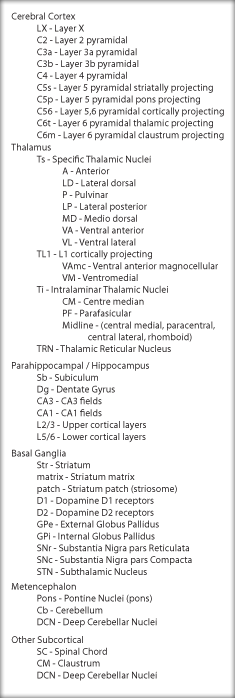
Summary diagram of proposed flow of cognitive information. Six of the circuits described in the text are shown to illustrate a summarized functional viewpoint of the hypoth- esized flow of information. Generally information flows from left to right through the color coded circuits. Circuit names and colors are represented at the top. Long-term memory is split into ’perceptions’ and ’associations’ as discussed in 4.1. Information flow details are de- scribe in the text. Cortical neuron x (Cx), Parahippocampal gyrus (PH), Hippocampus (H), Specific thalamus (Ts), Layer 1 projecting thalamus (TL1), Intralaminar thalamus (Ti), Cere- bellum (C), Striatum (S), External segment globus pallidus (Gpe), Internal segment globus pallidus (Gpi), Substantia nigra par reticulata (Snr), Basal forebrain (BF) [note: the basal forebrain is placed in layer 1 to demonstrate the primary target of its projections].


